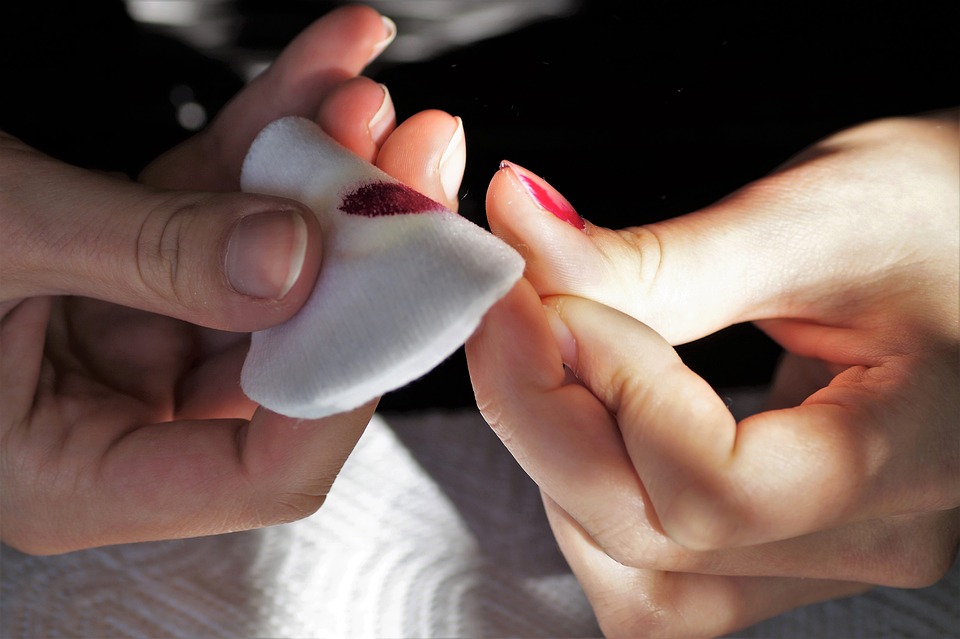Nails generally do not need much care. They can take care of themselves. However, there are certain things you can do or avoid that can result in clean and healthy nails.
Your Nails Should Be Trimmed Properly
This will assist you in avoiding ingrown nails. Also, it is advised to cut your nails right after you’ve taken a shower or a bath to soften them. You can use an emery board or a nail file to soften the edges or corners of your nails.
To Avoid Weakening Your Nails, File in a Consistent Direction
 Over time, filing back and forth severely damages nails. Therefore, it is recommended to disinfect your nail care tools once a month with 70% or higher isopropyl alcohol.
Over time, filing back and forth severely damages nails. Therefore, it is recommended to disinfect your nail care tools once a month with 70% or higher isopropyl alcohol.
Moisturize your nails after trimming them to keep them flexible and prevent splits.
And, remember to avoid using abrasive nail polishes. Formaldehyde and dibutyl phthalate are two ingredients that weaken the nail. Furthermore, using brightly pigmented colors on a regular basis can cause your nails to yellow or weaken. If you enjoy wearing bright colors, try going “all natural” between wears to give your nails a break.
Keep Your Nails Flexible and Strong by Moisturizing Them With Oil
Your nails, like other parts of your body, can benefit from being kept hydrated. Try dabbing some almond or avocado oil right onto your nail beds and cuticles before going to bed to keep them from becoming dry, brittle, or flaky.
If you don’t have avocado or almond oil, you can substitute lip balm.
Note: Cuticle moisturizers can also be purchased at drug and beauty stores.
Increase Your Intake of Protein and Omega-3 Fatty Acids
Keratin, a protein that makes up your nails, can be produced more effectively if you eat more foods like fish, nuts, and beans. You can also try taking daily supplements such as biotin and fish oil, which are available at a local grocery or health food store.
Vitamin B can also help strengthen and protect your nails, zinc can get rid of white spots, and iron can help prevent nail ridges from forming. Vitamins A and C can help your nails to become more hydrated and glossy. The daily protein recommendation is.8 grams (0.0018 lb) per kilogram (2.2 lb) of body weight.
Additional Note: There is no daily dose of omega-3 fatty acids recommended.
Remember That Nails Cannot Thrive in Wet or Dirty Environments
Such conditions promote the growth and reproduction of bacteria beneath your nails, which can be very difficult to remove. Furthermore, prolonged contact with moisture can increase your chances of developing split fingernails.
If you wash dishes, garden, or clean with harsh chemicals on a regular basis, wear rubber or plastic gloves to protect your skin and fingernails from damage.
If You Bite Your Nails, Take Steps to Stop
 While this can be a very difficult habit to break, it is critical because germs and bacteria in your mouth can easily enter your body through abrasions caused by your teeth.
While this can be a very difficult habit to break, it is critical because germs and bacteria in your mouth can easily enter your body through abrasions caused by your teeth.
Try painting a layer of clear gel on your nails to make them more difficult to bite through.
You could also try using a bitter-tasting nail polish to discourage you from chewing your nails.
Avoid Cutting and Picking At Your Cuticles
Cuticles, while not always aesthetically pleasing, actually protect your nail bed. When you trim your cuticles, you risk creating microcuts that allow contaminants like bacteria and fungi into your body. These, in turn, can result in an infection.
If you absolutely must make your nails appear longer, use the flat edge of a wooden orange stick to gently push your cuticles away from your nail tips. It is a myth that cutting your cuticles regularly causes them to grow faster when you stop.
If Your Nails Cause You Pain on a Regular Basis, See a Doctor
If your nails are clean and healthy, they will have no spots or discoloration, the same color and flexibility throughout, and no craters or depressions. Cuticles should be visible, and the nail bed should be a light whitish-pink color. Pain, blood or swelling in the nail area are all causes of concern.
You should also consult a doctor if your nails stop growing or curling. And, remember that vertical ridges that are right along the length of the nail, on the other hand, are normal.


